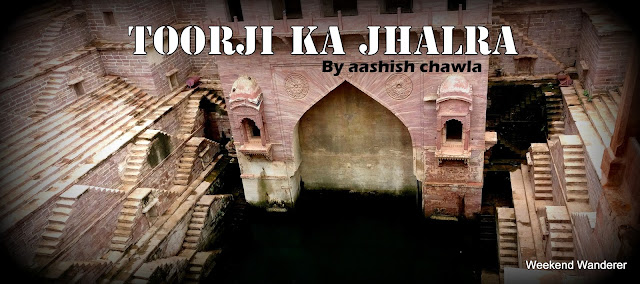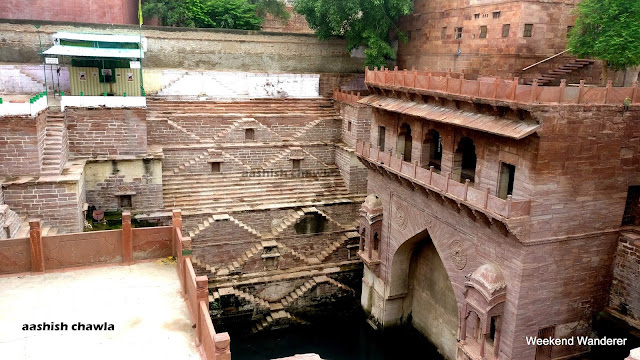After finishing the Sardar Market (Click here to read part 1) we came out from the gate opposite to the Nai Sarak gate. Immediately after coming out we inquired from the local shopkeeper as to where is Toorji ka Jhalra,
| Back gate of Sardar Market |
Luckily for us he knew to the place and directed us.You must be wondering as what is this Toorji ka Jhalra, Well Chalo aaj aap ki class leta hu, Please bore mat hona Stepwells in most part of India are known as bavri or bawdi but here in Jodhpur it’s called Jhalra. Toorji ka Jhalra is an ancient stepwell. One can easily reach this place by simply inquiring from the locals.
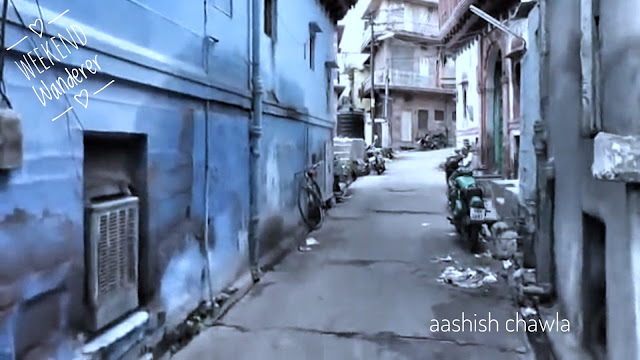 |
| Narrow streets with Blue houses |
A little walk through the narrow alleys,local blue houses and in hardly 10 mins you are at Toorji ka Jhalra Stepwell. Standing at the road level one cannot gauge as to what is in store for him or her unless one climb few steps and reach the edge of the stepwell. That is the reason I didn’t divulge any information to any of my co travelers, I wanted to surprise them. Hence just like a magician who is ready to unveil the secret magical object , I called all of them to the edge and then called out to open their eyes. I got the response that I was seeking from them and yes it was simply WOW.
I could see the sparkle in their eyes. Who could have thought that such beautiful historical treasures lies in the narrow alleys of this Blue city.
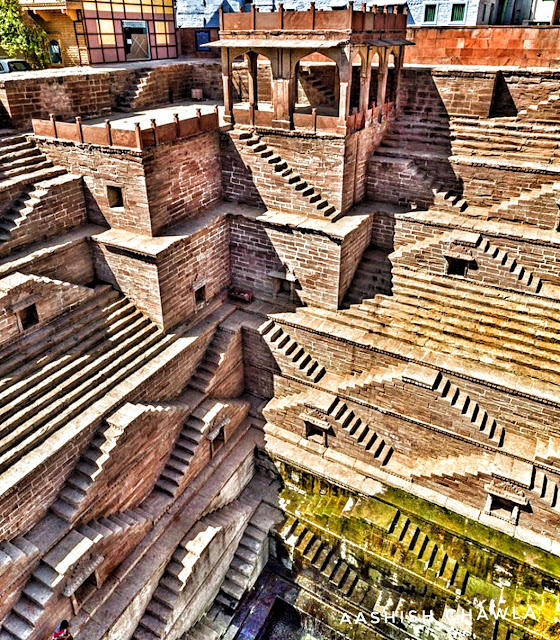 |
| Wow Moment |
Let me inform you Jodhpur is full of such hidden stepwells,some are explored while some lies buried due to neglect. I’m told there are more than 100 such hidden stepwells. According to Rajyavallabh and Prasad Mandan, two traditional books on town planning in Rajasthan, an ideal city should have 40 stepwells. Ab dekhna yeh tha ki Jodhpur me kitni milti hai dekne ko So for a start Toorji ka Jhalra was the first one to be visited by us.
All over India, stepwells are on the verge of extinction, barring a few big ones that have survived the test of time are being turned into local tourist wonders. Jodhpur, however, has the unique distinction of not only maintaining these structures well, but also using the water for domestic and recreational purposes. In fact, the city’s stepwell system is an example of what can be achieved through people’s participation.
Why I said people participation, Actually due to neglect these stepwells were buried underneath the heap of debris, waste, mud etc but then the local volunteer through community efforts cleared and cleaned these hidden treasures.
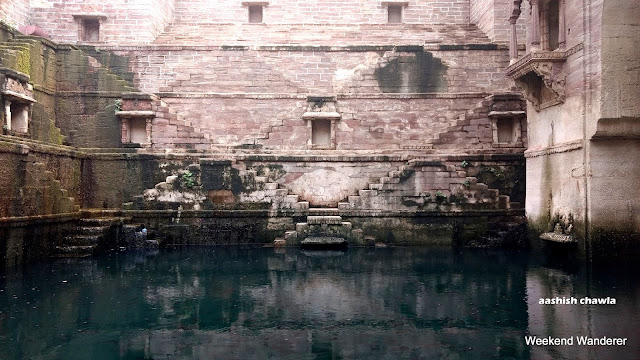 |
| View at the bottom |
Folklore.
While talking to the local guide,he gave me an interesting insight to these stepwells. According to him there is a folklore about Jodhpur having a curse. In the mid 15th century, the king of Mandore , Rao Jodha, was keen on moving his capital to an elevated spot from where he could defend the empire against frequent attacks by enemies. He found Chidia-tunk, a 125m-high rocky hill, ideal for this. However, inorder to build Mehrangarh Fort, he had to encroach upon the hermitage of Saint Chiriya Nathji, who in anger cursed that the new city would face constant famines.In response to the curse the king realised that they will have to safeguard themselves against this curse, Hence town planners thought of this water conservation tool of stepwells.
Mehrangad fort is on the hilltop, the walled city of Jodhpur is located at the foot of Chidia-tunk. This made it possible to supply water through a gravity-led system. A vast network of lakes and canals were built in the hills around the city, while wells, stepwells (bawri), step ponds (jhalara) and tanks became a common feature in the plains.
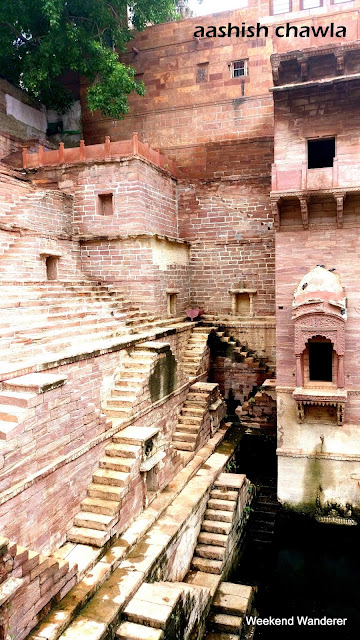 |
| Intricate carvings around Windows |
Those maze of steps , the carvings on the stone , for me these stepwells are nothing but architectural delights to be relished.
Fact File of Toorji ka Jhalra
Toorji ka Jhalra was built in the 1740s by Maharaja Abhay Singh’s queen consort which was in keeping with the age old tradition of ladies of the royal family building Public water works. The Jhalra was primarily used by women, as fetching and storing water was one of their principal household chores.The Jhalra is embellished with intricate carving of dancing elephants, Medieval Lion and cow shaped water sprouts.
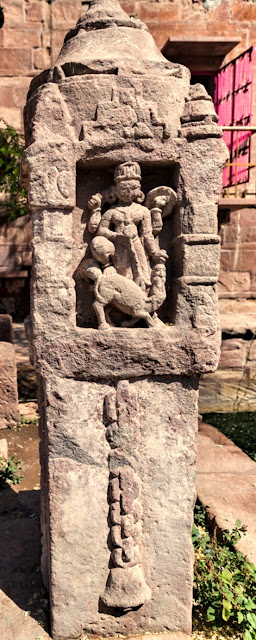 |
| Some more carvings |
I think enough of Gyan for today. We were running like mad up and down the stone stairs of this step well enjoying every nook and corner of this well.
| Running up and down, exploring every nook and corner |
The water below have lots of fishes in it.The depth of the stepwells was nothing less than 200 feets.
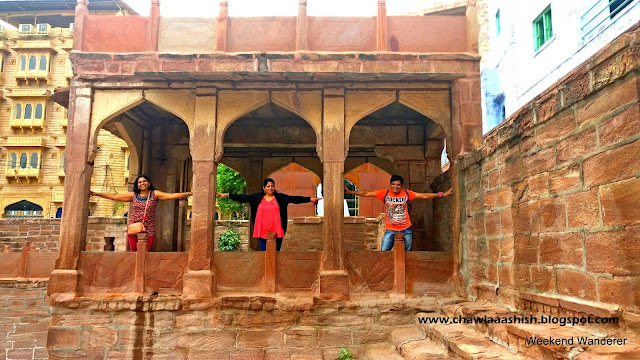 |
| Its Show time for the Gang |
We took few photos to mark our presence. I had to drag everyone out because our next destination Mehrangad fort was beckoning us.
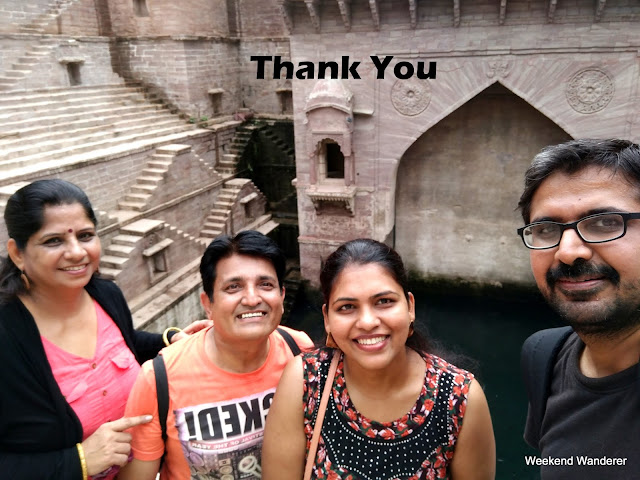 |
| Our Team |


